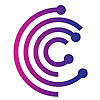ARTICLE AD BOX
Decentralized applications (dApps) showcased significant financial growth, spearheading a vibrant period for the crypto sector. Top-performing DeFi applications demonstrated sustainable business models, primarily driven by trading fees and commissions.
This activity highlighted the resilient and evolving nature of decentralized finance (DeFi), with lending, trading, and liquidity pools experiencing a surge in user engagement and fee generation.
Elevated fee structures enhance earnings
Decentralized applications on Ethereum dominated the revenue charts due to heightened trading activities and increased adoption of cross-chain functionalities. The most successful apps catered to seasoned crypto enthusiasts and attracted new users seeking passive income opportunities with reduced risks compared to direct cryptocurrency trading.
As user numbers swelled, these platforms reported elevated earnings, underpinned by robust fee structures that reflect both the market’s recovery and the growing trust in decentralized financial mechanisms.
The top dApps implemented varied fee models depending on their operational frameworks. These ranged from transaction fees to trading commissions, with each app tailoring its financial strategies to balance revenue generation against block rewards and user incentives. This diversity in economic architecture supports a broader analysis of crypto fundamentals, offering insights into these decentralized projects’ reliability and long-term viability.
Leading platforms and revenue insights
Among the standout platforms, Base emerged as a critical player by providing cost-effective access to its chain without the overhead of supporting a native token. Meme tokens significantly bolstered Base’s revenue, increasing network traffic and the associated gas fees.
In a similar vein, Aerodrome, a leading decentralized exchange on Base, recorded exceptional fee revenues, outperforming the native metrics of the Base protocol itself during peak trading periods.
LidoDAO also marked its presence in the top revenue-generating protocols, capitalizing on its role as an intermediary in staking operations. Despite higher operational costs due to liquidity provisions for its LDO tokens, LidoDAO successfully profited from a cut of all staking rewards. Ethena, another high performer, leveraged stable ETH prices and the growth of the USDe stablecoin to optimize its revenue streams through liquidity provisions and staking.
Fee dynamics and market trends
While discussing fee dynamics, it’s noteworthy that Ethereum continued to lead in fee generation compared to other networks like TRON, which showed a temporary reversal in positions. Ethereum’s robust activity, reflected in over $1 million in fees, underscored its dominance in the crypto space, particularly in a comparison with Bitcoin, where Ethereum transactions generally commanded higher fees.
Furthermore, Solana displayed resilience in rebuilding its ecosystem, with revenue streams primarily sourced from validator fees. Despite net losses due to the costs of maintaining validator incentives, the network experienced a revival in meme token trading and NFT transactions, signaling a recovery phase.
The first half of 2024 painted a promising picture for decentralized applications, with substantial revenues driven by innovative fee structures and a growing user base. As the crypto market continues to evolve, these platforms provide essential services and critical economic insights that shape the landscape of decentralized finance.
The post Decentralized Apps Lead Revenue Generation in H1 2024 first appeared on Coinfea.
.png)
 3 months ago
2
3 months ago
2








 English (US)
English (US)